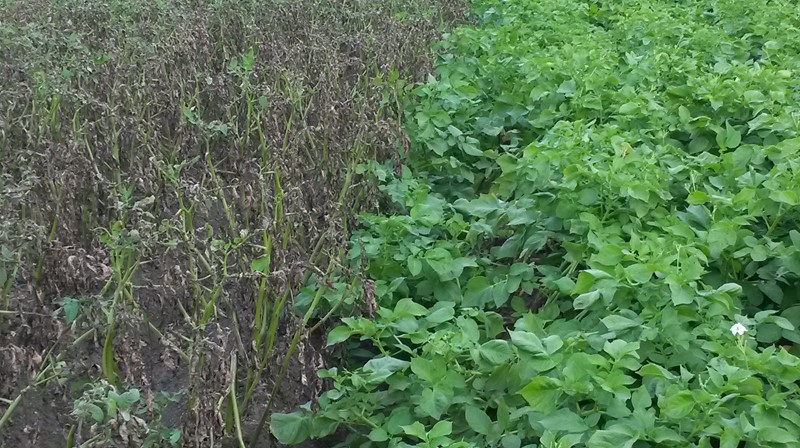Publications
Agrico Research

Resistance to late blight
Late blight is the leading cause of potato disease and is a much discussed topic in the potato world. Agrico has brought a number of late blight-resistant varieties onto the market in various market segments under the name "Next Generation".
Next Generation
The cultivation of late blight-resistant varieties represents significant progress for organic potato cultivation in particular, but the Next Generation varieties also have the characteristics that will enable them to be a success in conventional cultivation.
Resistance
The genetic basis for late blight-resistant varieties is still very narrow and is often based on one main gene, with a group of about five different resistance genes crossed in for the Next Generation varieties. In resistant varieties, all cells that can be invaded by the fungus die rapidly, preventing the fungus from developing. However, the crop tends to switch off the resistance gene late in the ripening phase, which means that resistance will not always persist and the fungus will still have a chance in the second half of the growing season. In organic cultivation, this means that when the resistance no longer works sufficiently, the only remaining option is to burn off the foliage. In conventional cultivation, research is being carried out to find optimal ways of exploiting late blight resistance. Here, the main benefit can be achieved by reducing the number of spraying operations. Agrico Research is investigating an alternative spray scheme to combat late blight in Next Generation varieties in order to derive maximum benefit from the resistance.
New ground
The development of new Next Generation varieties is a continuous process involving the combination of multiple resistance genes. It is expected that this development will ensure that varieties are free of late blight more often and in more cultivation areas until the end of the cultivation season.
The strain of late blight affecting the crop is not important when it comes to making use of the resistance, but it is important to know whether it is virulent with respect to the resistance gene in the cultivated Next Generation variety. In order to make the best possible use of the varieties, it is therefore important to understand which virulence occurs in which growing area and how it moves between and within the growing areas and across the seasons. However, little is known about this and it is therefore a subject of interest to scientists.
